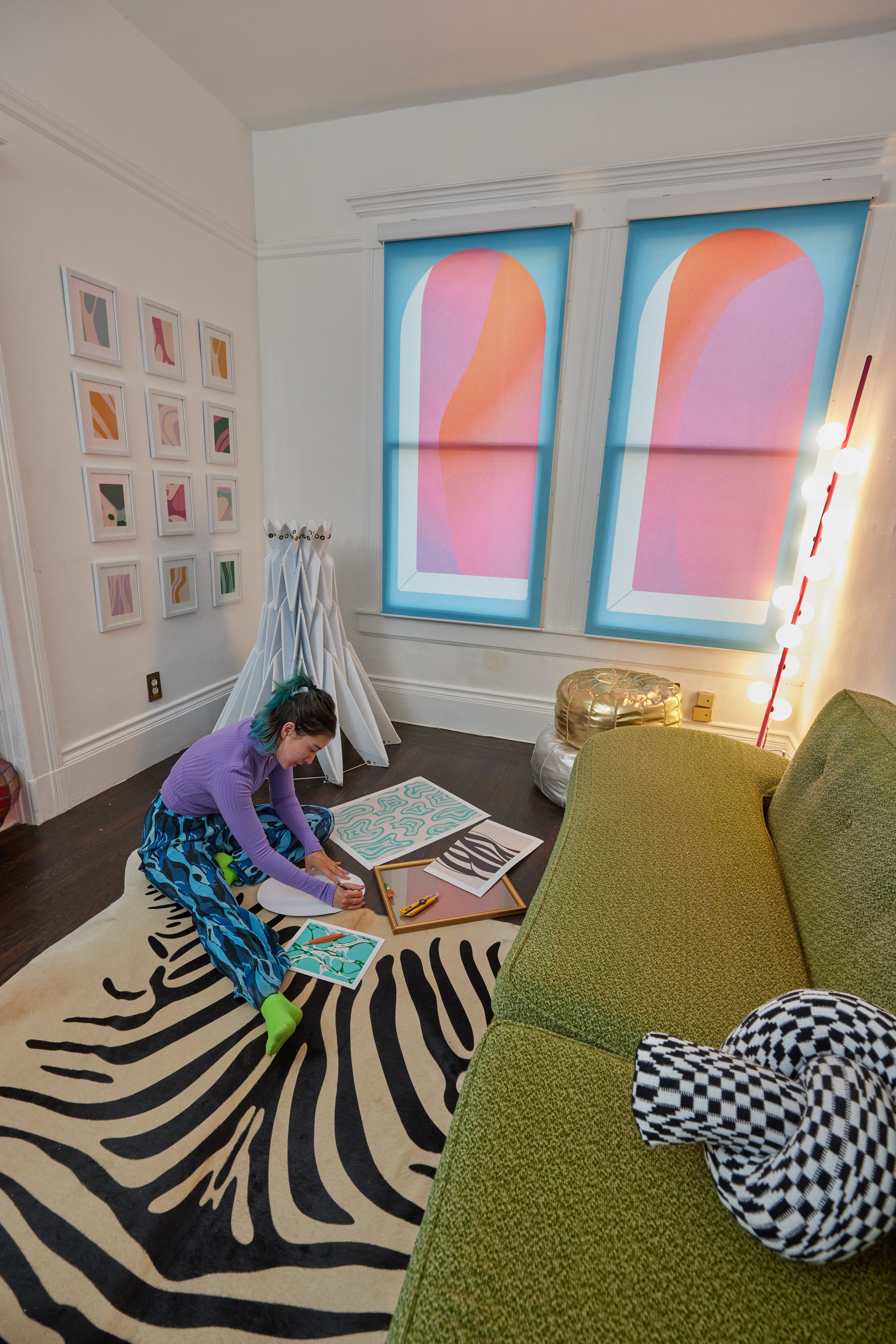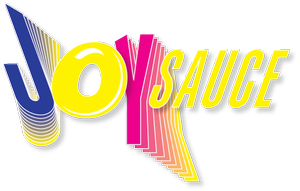Meet DIY TikTok Sensation Tay BeepBoop
Mixed Asian Media - March 22, 2023
By Meeja Kinsey
Photos by Emilio Diaz
Powered by JoySauce
Photo: Emilio Diaz
After posting her first video, Tay BeepBoop rocketed out of obscurity, amassing a prodigious audience of 1.4 million followers on TikTok. With her bubbly personality and background in production and advertising, she capitalized on her talents to share her journey of home renovation and design using eclectic style and loud colors. At one point, Tay was living in a literal closet while working numerous jobs, eventually climbing out of poverty and purchasing her own home at the age of 26. However, her new start was filled with strife as she struggled with illness and traumas. Using her ability to create and share her journey as a healing experience, she connected with her ever-growing community who was also healing along with her. Women from backgrounds of abuse or mental health issues opened up to Tay online and shared how they were inspired to take back their power through creating and making their spaces feel like their own. Her relatability and whimsical videos have made her a beloved role model for those in search of restoration of home and self.
Interview
I wanted to start with your strong presence doing DIY on TikTok (where you now have 1.4 million followers), however, I'd really love if you could dive more into your personal background and upbringing first.
Growing up in Hawaii, everyone I knew was Asian. My dad is white, and when we go to my family parties, he’s like a foot taller than everyone else, and he's, like, the only white guy in a room of 50 people. And to all of my cousins, I'm like the white cousin because I'm half white.
Culturally I grew up with a ton of different Asian cultures, it's a really big part of local Hawaiian culture. Hawaii has, like, all the signs written in Japanese and English, and it's just heavily Asian. So I'm sad I no longer can fit it in my TikTok bio, but I have it on my Instagram bio.
Yeah, I'm curious about that as well because, even though it's not explicitly said, I obviously caught it on my “Hapa radar,” I kind of like to call it. Do you mind sharing more in depth of what your mix is or how you identify?
That's so funny, I have a Hapa radar too. If I'm at a restaurant and there's a waitress I swear is Hapa, I'll be like, “I'm sorry. Are you half Asian?” I love spotting one of us in real life because it's not as common on the mainland. But back home in Hawaii, like everyone's Hapa. That's the norm.
Sorry, the question being... oh, my mix! My mix is, I'm half Japanese and half white. My white is just a bunch of random different bits of white. I'm Croatian, which is cool.
What do you appreciate the most about your Asian background, and what are some things you struggle with? Are you connected to one more than the other?
I am much more connected to my Japanese heritage. It's like an entirely 100% Japanese family. So, on New Year's Eve, we'll do some traditional things, like the orange and mochi and soba noodles to start off the new year.
An interesting tidbit is my parents got pregnant when they were living in the Bay Area. My mom and dad were like, “We're gonna have mixed race kids.” So they thought, “Where is gonna be a safe place for them to grow up?”
Wow, it's so interesting that they even had that conversation.
Yeah, back then they had to have that talk. They decided the only places where they would feel comfortable having our kids grow up would be the Bay Area, L.A., or back home in Hawaii.
Photo: Emilio Diaz
What's the importance of having a safe space and how can people achieve that? Would you say growing up in Hawaii influenced your attraction to bright colors in your interior design?
I would say that my love of color isn’t to do with growing up in Hawaii, even though it is the rainbow state. But maybe subconsciously I did gravitate towards color because of my surroundings. I think it's just a personality trait of mine.
I've always wanted to be the loudest. Not audibly loud, but just like the loudest person in a room. I want that attention, and that's just because of my upbringing.
Side note, do you remember 2020 when all of the Asian American hate crimes were happening? That was so terrifying for me because I lived in a neighborhood where there were hate crimes, and I was scared to just walk in my neighborhood — terrifying, feeling unsafe in your own home. The importance of feeling safe in your home is priceless; it's invaluable. I have a lot of issues in feeling safe at home in particular because of past traumatic experiences that have happened in this house.
So I'm doing everything in my power to create a safe space, which is why I decorated it the way I have. I'm trying to make it a happy, safe place because it wasn't, and I so badly want that. A storyline in my social media as of late is how I'm trying to move out of this home. I really wanna find my forever home that I will feel happy and safe in. I can't really answer and tell people how to achieve that because I'm trying to achieve it myself.
I think a lot of people can empathize with that as well. It almost sounds like you're sharing the journey of trying to find that safe space, rather than the end product. Maybe that's helping others reach that. I thought it was really interesting how you process it.
I've gotten a lot of messages from women, in particular. My following is like 96% women, which is awesome. I love that. I get a lot of messages from women who are like, “Your content has inspired me to take my power back and turn my space into my space.” There are women who have said, “I just left an abusive relationship. I'm in a new house, and I need to make this my happy place, and you’re helping me do that.”
I think a lot of people are getting their power back through creating and through doing it themselves. You build self-esteem by doing things yourself. You’re proving to yourself, “I don't need someone else to do this. I can do it on my own.” I think that the whole concept behind DIY is helpful in healing. Also being able to flex your creativity. I don't just do DIYs. I see something I like, I read tutorials, and I build it.
Photo: Emilio Diaz
That's amazing. I can totally see that as well. What's next for you? Do you have projects that you're pulling from, like you mentioned looking for a new home, anything you wanna share or what you're hoping to pursue?
I want to be designing commercial spaces. I designed a store in San Francisco recently, along with a two bedroom home in Seattle. My larger goal is to design a motel. I want to design a themed-room motel. I’d get to be incredibly creative with every room being different, and I intend to have a TV show as well to help me achieve that goal. Those are my big, big creative plans in the near future.
I wish you all the best with those, and I think that they’ll come to fruition. Definitely manifesting it now.
End of Interview
Meeja Kinsey is a culture and media enthusiast who works in soccer. She is a fanatic of contrasting images and concepts, coming from a background blended with Korean roots and Deaf parents. As a result of moving frequently, she relies heavily on her social media network to build a sense of community. You can always initiate a convo with a good dad joke or follow her on Instagram at @nicetomeeja.
JoySauce is a multimedia network dedicated to celebrating the full spectrum of Asian American and Pacific Islander narratives. The site boasts a vibrant library of content around entertainment, lifestyle, food, travel, culture, relationships, art, and education in the form of exciting new streaming shows, movies, standup comedy, provocative podcasts, and a suite of editorial updated daily.





